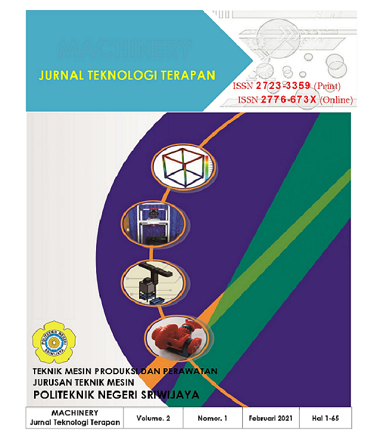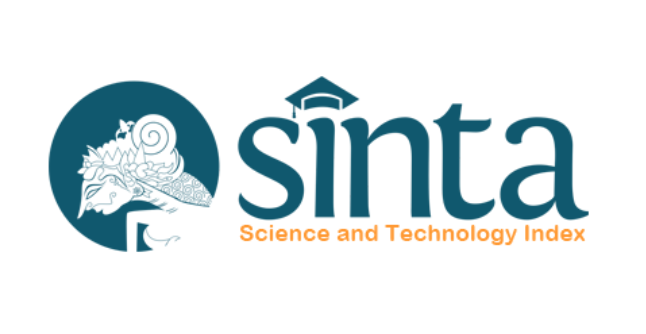ANALISIS KEKUATAN PAPAN PARTIKEL DARI SERAT AMPAS TEBU DENGAN PENAMBAHAN RESIN POLYESTER UNTUK PEMBUATAN PAPAN SKATEBOARD
DOI:
https://doi.org/10.5281/zenodo.4748679Abstract
Composites are materials that are formed when two or more different components are combined (Kroschwitz, 1987). K. Van Rijswijk et al in their book (Natural Fiber Composites, 2001) describes a composite is a hybrid material made of fiber-reinforced polymer resin, combining mechanical and physical properties. Research on the strength analysis of particle board by utilizing bagasse so that it has a better economic value. Variations in the ratio of fiber fraction and polyester resin were 2:40, 5:40 and 8:40 with each and mixed based on the ratio of fiber weight fraction and resin weight. Based on the analysis using ANOVA, it was found that the best composition of the final composite product was in the composition of 8 grams of bagasse fiber and 40 ml of polyester resin. The composition has a bending strength of 9, 19 N / mm2. Based on the analysis using ANOVA, it was found that the optimization parameters were 0.04 millimeter layer thickness and 16 seconds lighting time, the optimal results were in the dimensions of 40.01 millimeters in diameter and 3.20 millimeters of thickness.
Downloads
References
Andis Aditya P. 2015. “ Pengaruh Proses Degumming dan Prosentase Fraksi Berat Serat Sabut Kelapa (Cocos Nucifera L.) Terhadap Kekuatan Impact Pada Pembuatan Papan Partikel Board†Jurusan Teknik Kimia. Yogyakarta
Isnan Priyadi, dkk. “Sifat mekanis Komposit Resin Perpenguat Serbuk Kayu sengon (paraserianthes Falcataria)â€. Jurusan teknik mesin. Tegal
Nasmi Herlina Sari. 2012 “ketahanan bending komposit hybryd serat batang kelapa/serat gelas dengan matrik urea formaldihydeâ€. Mataram
Hartono Yudo, dkk. 2008 “analisa teknis kekuatan mekanis material komposit berpenguat serat ampas tebu (baggase) ditinjau dari kekuatan tarik dan impak†Fakultas Teknik. Diponegoro.
Dicky S., Romi W. & iskandar. 2017. Optimasi Parameter Pada Proses Pembuatan Objek 3D Printing Dengan teknologi FDM Terhadap Akurasi Geometri. Seminar Nasional Teknik Industri Universitas Gadjah Mada 2017. ISBN 978-602 73461-6-1.
Dicky Seprianto, Iskandar, Romi Wilza, EYT Adesta. 2019. Influence of Internal Fill Patter. Polishing Time and z-Axis orientation on the Tensile Strength of the 3D Printed Part. International Journal of recent Technology and Engineering (IJRTE).
Ovythia Anggrainie, dkk. 2013 “Kualitas papan komposit dari sabut kelapa dan limbah plastik berlapis bambu dengan variasi kerapatan dan lama perendaman NaOHâ€. Fakultas Kehutanan. Pontianak.
Romels C. A., dkk. 2011 “komposit hibrid polyester perpenguat serbuk batang dan serat sabut kelapaâ€. Malang
ASTMD790. 2012. Standard TestMethods for Flexural Properties of Unreinforced and Reinforced Plastics and Electrical Insulating Material.
Femiana Gapsari, dkk. 2010 “pengaruh fraksi volume terhadap kekuatan tarik dan lentur komposit resin berpenguat serbuk kayuâ€. Teknik Mesin, Universitas Brawijaya.
Sefry Adithya, dkk. 2015 “pengaruh fraksi berat serat terhadap kekuatan bending komposit rhdpe-cantulaâ€. Jurusan Teknik Mesin. Universitas Sebelas Maret Surakarta.
Isnan Priyadi, dkk. “sifat mekanis komposit resin epoksi berpenguat serbuk kayu sengon (paraserianthes falcataria)â€. Jurusan Teknik Mesin Universitas Pancasaki Tegal
Downloads
Published
How to Cite
Issue
Section
License
The Authors submitting a manuscript do so on the understanding that if accepted for publication, copyright of the article shall be assigned to MACHINERY: Jurnal Teknologi Terapan as publisher of the journal. Copyright encompasses rights to reproduce and deliver the article in all form and media, including reprints, photographs, microfilms, and any other similar reproductions, as well as translations.Â
MACHINERY: Jurnal Teknologi Terapan and the Editors make every effort to ensure that no wrong or misleading data, opinions or statements be published in the journal. In any way, the contents of the articles and advertisements published in MACHINERY: Jurnal Teknologi Terapan are the sole responsibility of their respective authors and advertisers.








